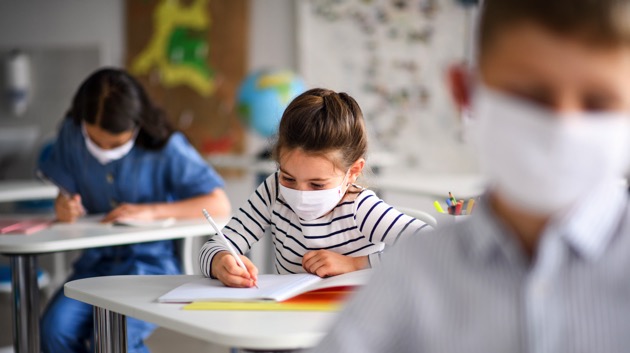How to prepare kids for back to school without fixating on ‘learning loss’
Halfpoint/iStock
(NEW YORK) — As students across the country head back to school, a top priority for many educators and parents is how to help students who have experienced “learning loss” during the COVID-19 pandemic.
With kids leaning remotely since early 2020, “learning loss” — or gaps in understanding and skill knowledge that prevent academic progress — has been a natural worry for many parents.
But instead of dwelling on how much students may have fallen behind during their time away from school, some educators are focusing on meeting students where they are rather than focusing on what they’ve “lost.”
“Sometimes the phrase ‘learning loss’ doesn’t value and uphold all of the hard work that teachers, students and families did over the last year and a half to really try to stay the course and really keep their students learning,” Juliana Urtubey, the Council of Chief State School Officers’ 2021 national teacher of the year, told Good Morning America.
“One of the things that I like to tell families and my students is that we’re going to be OK. We’re going to work really hard to catch all the kids up,” Urtubey said. “But what we want to focus on is the future and how to meet all the needs of all of our students instead of working, fixating on the pressure of catching up.”
Urtubey, who is a special education teacher at Kermit Booker Elementary School in Las Vegas, said that even if the COVID-19 pandemic didn’t exist, teachers still assess where students stand academically each year. But if learning loss is the main focus this school year, Urtubey said it could put a lot of pressure on students.
“I think that one of the biggest things we can do is really be critical about how we think about this concept and push back on the idea that our students are going to have to be running the whole year to catch up,” said Urtubey.
Urtubey said that in-person learning will provide a support system for students as they return to school and teachers will meet their needs to help them stay engaged and help them get to where they need to be academically.
“We’re going to work really hard to make sure all of our students have the foundational knowledge they need to be able to apply critical thinking,” Urtubey added. “Each student benefits and thrives in different ways, which is why it’s so important for us to have community within our learning spaces no matter what grade you’re in. Students do better when they know that they’re part of a community and that there’s lots of support for them.”
Ahead of the upcoming school year, Urtubey shared some advice for parents to help their kids feel supported as they transition back to in-person learning.
Co-write a letter with your child to the teacher
Urtubey said co-writing a letter with your child to their teacher is a good way for teachers to get to know students, but also a good way for students to introduce themselves to their teacher. Students can talk about anything from their family to their favorite activities. It can also include what they struggle with in school or what they’re excited to learn. Parents can also include their concerns in the letter.
“As a teacher, I loved getting these letters at the beginning of the year,” Urtubey said. “They made me feel like I already knew the child and I already had a first step in terms of building this kind of trust with families.”
Do activities that are both academic and of interest to your child
If your child expresses an interest in certain subjects like art or reading, Urtubey said it’s good to push them to explore the topics more. For example, if a child is interested in space, Urtubey said a trip to the library can help get your child reading books about space.
“You’re carving out time at home for them to read, so that learning is enjoyable, so that learning is self-guided and self-motivated and that the child has some kind of way to share the learning at home,” Urtubey said. “I think that especially during this last year, we have to make sure that all students feel joy in what they’re learning.”
Visit school before the year begins
For big transition years, like kindergarten or the start of middle school, one way to help prepare students for the upcoming year is to visit the school before the year begins. That way students know where they’re having lunch, where their classroom is, who their teacher is and more.
“A lot of schools will already schedule this,” said Urtubey. “I know that this is really helpful in reducing stress before the first days of school.”
Help students practice introductory questions
Urtubey said when she taught fifth grade students, one way to help them prepare for middle school was spend time with them on things like switching classes or practicing opening a locker. Another way they prepared for the school year was to practice social skills to make new friends.
Urtubey suggested practicing different conversations for different scenarios with your student to help them take the stress or anxiety out of forming friendships or meeting new people.
Encourage deeper conversations about school
At the end of each day, Urtubey suggested asking your child questions beyond “How was your day?” since that doesn’t necessarily start a conversation with them about what happened during school.
Instead, Urtubey suggested questions such as, “Tell me about a time that you felt really happy today,” “Tell me about a time you felt challenged today,” or “Tell me a bit about what you learned today,” will help foster more discussions about what they’re feeling.
Copyright © 2021, ABC Audio. All rights reserved.

